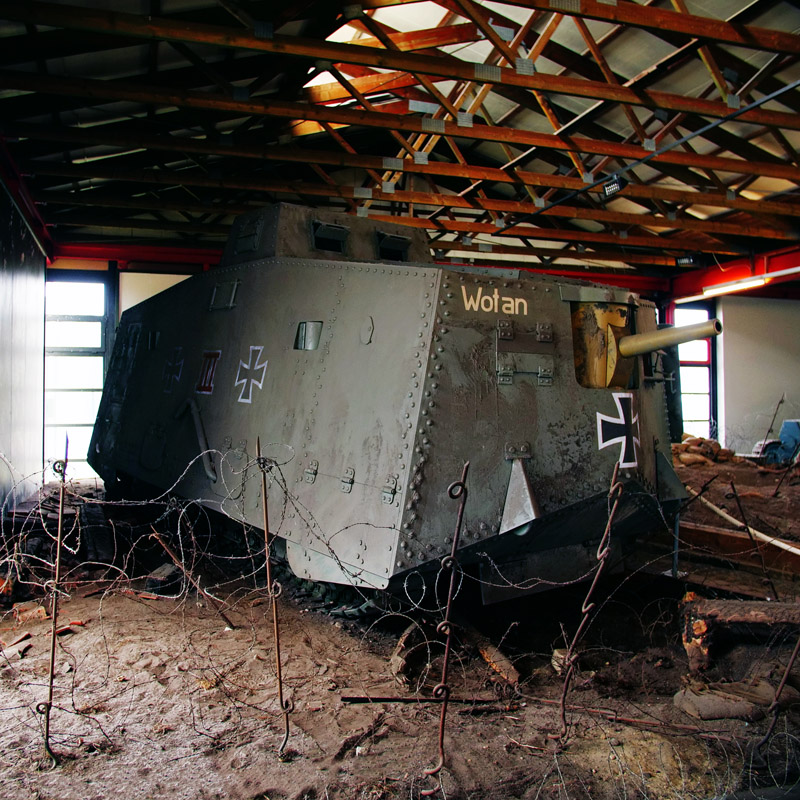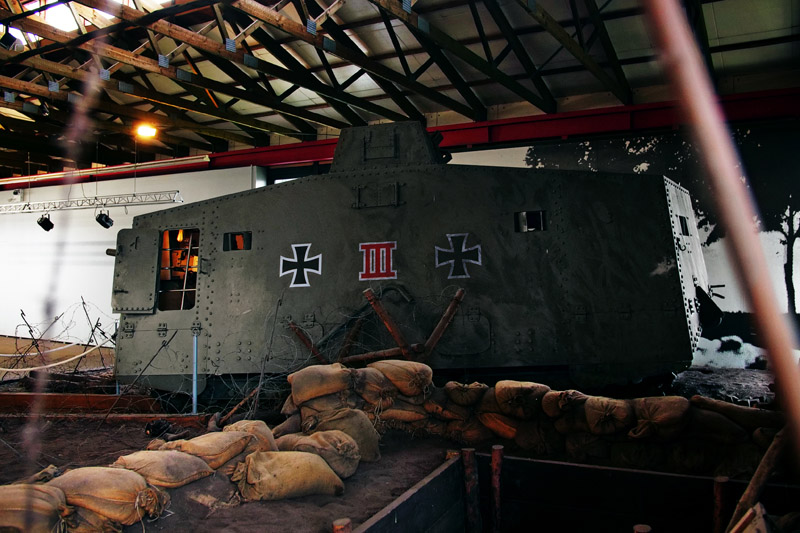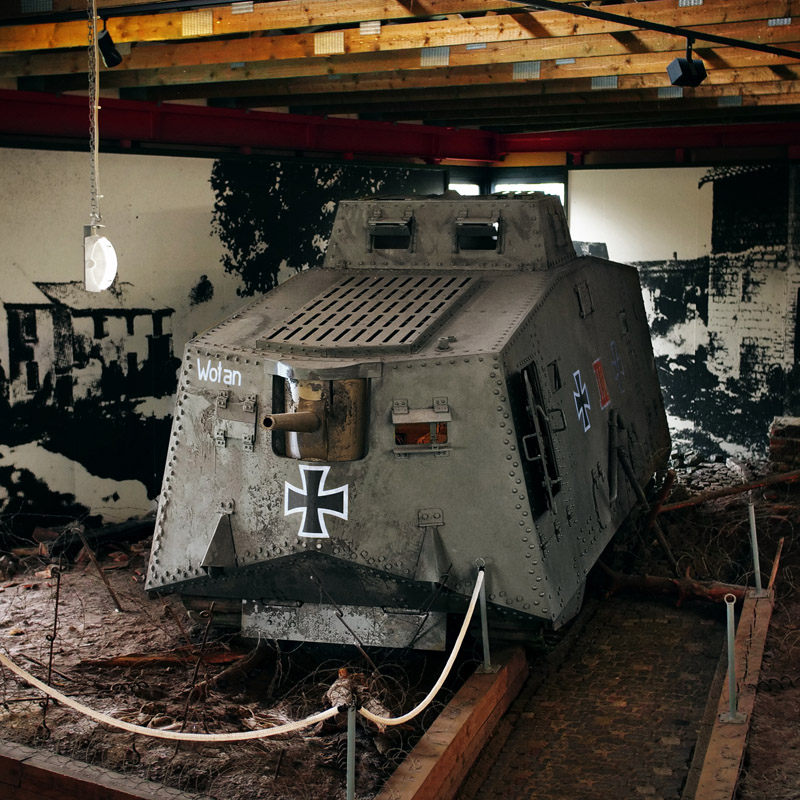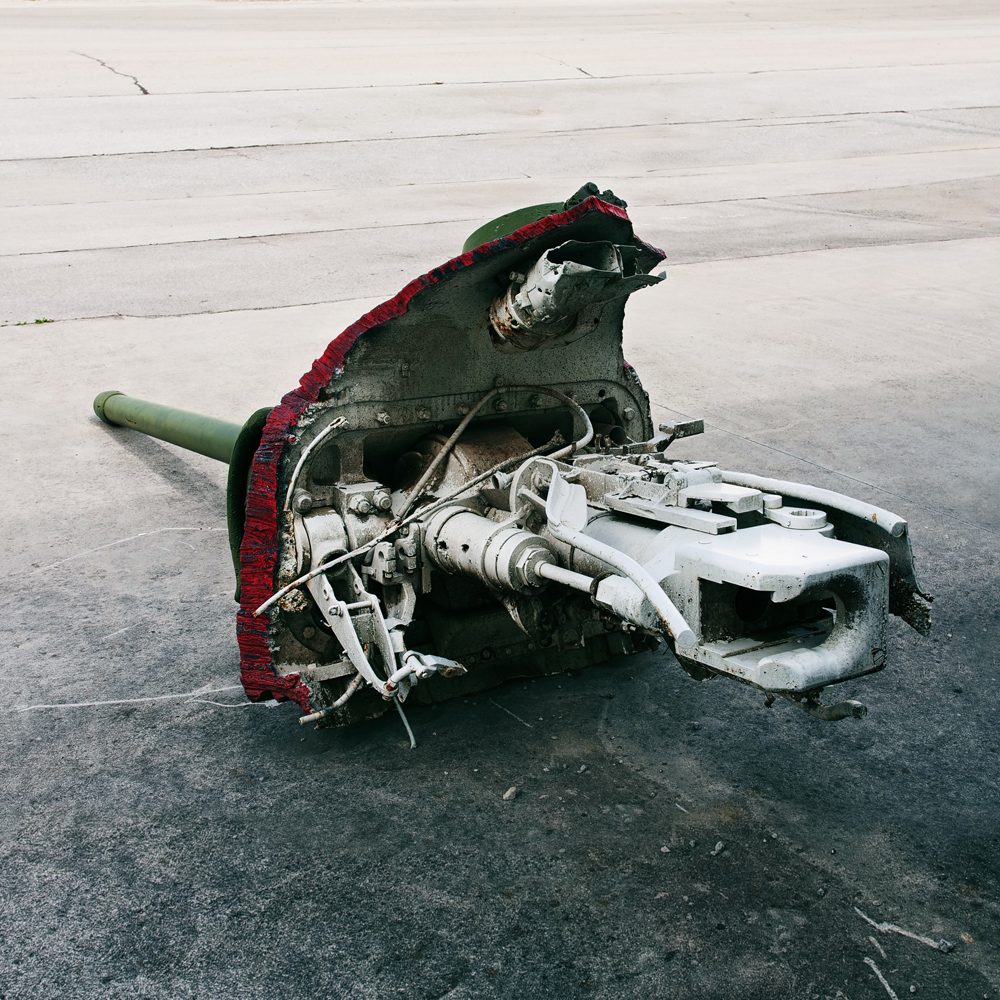Type: Heavy Tank
Nation: Germany
Period: World War 1
Location: Deutsches Panzermuseum Munster, Germany

Difficult decisions
The A7V was the first and only operational German tank of World War 1. When the first British Mark Is had been crawling across the battlefield on the Somme in September 1916, the German reaction (aside from a historical “Tankschreck”) was to order the large-scale development of a similar combat vehicle. But since the German Empire was under blockade, resources for this project were utterly scarce. And as the early British tanks proved to be notoriously unreliable and vulnerable to artillery, the priority of German production was eventually shifting back to building U-boats – a supposedly much more promising way of turning the tide of war into Germany’s favour.
Quick design, slow production
The German tank programme therefore had to go ahead on a very limited scale. Within just six weeks the successful automotive engineer Joseph Vollmer managed to work out a complete design that would be named after the “Abteilung 7 Verkehrswesen” (= Department 7, traffic affairs), the section of the war department which was responsible for such developments. A prototype was ready by January 1917, but it took until October for the first production A7V to leave the Daimler-Motoren-Gesellschaft factory in Berlin-Marienfelde. Only 20 of these carefully hand-manufactured machines would be finished by the end of the war – which was actually less than the 30 captured British “Beutepanzers” in German service.

Modular design
Since the Germans had no experience with building tracked vehicles prior to the A7V, they had to purchase an American-made Holt caterpillar tractor from the Austro-Hungarian War Ministry in November 1916 to get their own tank programme going. The Holt’s track frames were lengthened and an even platform was mounted on top. The resulting chassis could either be fitted with a wooden flatbed-like superstructure to become a support carrier vehicle called “Überlandwagen” – or with the armoured hull of the A7V fighting tank. Either way, the overhanging hull on the front and back seriously limited the vehicle’s trench-crossing capabilities – the very same problem that had plagued the French Schneider CA1, which had also been based on the Holt tracks. The A7V-U (U for “Umlaufketten” = all around tracks) tried to rectify this problem by copying the British rhomboid-shaped hull layout, but only a single prototype was ever built. Besides these variants, there have also been plans and prototypes for anti-aircraft versions, artillery tractors and radio vehicles.
As close as possible
The static replica at the Panzermuseum in Munster is an almost 100% exact representation of an original A7V. The idea to meticulously rebuild one of these vehicles with the help of the historical blueprints originated at a department of the Bundeswehr in the 1980s. Construction started in 1987 and took several years until completion. As almost all A7Vs carried names, the replica was painted to resemble “Wotan” – a vehicle that had survived the war, but was scrapped by the Allies in 1919. Today there is only one original A7V left in the world: “Mephisto”, which is on display at the Queensland Museum in Brisbane, Australia.


5 responses to “Sturmpanzerwagen A7V (Replica)”
[…] linked to mechanical pointers in the sponsons – similar to the indicator system in the German A7V. The rear cab also allowed for the unditching beam to be deployed from a reasonably covered […]
LikeLike
[…] Only halfheartedly did they order development of a tank of their own. The first German tank, the A7V, would not be operational until 1918. Being an entirely new weapon at the time, nobody really knew […]
LikeLike
[…] 32-ton A7V was by no means a small vehicle, but the number of crew members was disproportionately large. The […]
LikeLike
[…] – in this case taken from the American Holt tractor (which the Germans would also use for their A7V). The “keel” on the Schneider’s boat-shaped nose was designed to cut through barbed wire and […]
LikeLike
[…] The 22-ton behemoth was crewed by eight men: A commander/driver, a gunner/loader plus an assistant gunner for the main armament, four machine gunners and a mechanic. The tank was steered by a rather advanced gasoline-electric transmission which used a four-cylinder engine powering one electric motor for each track. The vehicle‘s name refers to the town of Saint-Chamond in the Loire department, where its manufacturer FAMH was based. A formidable 400 units were built – compared to 1,200 British Mark IVs and only 20 German A7Vs. […]
LikeLike